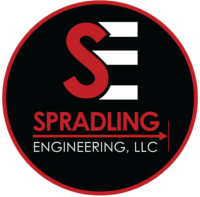Plenty of people in the Austin Texas area are heading to their pools this summer. Unfortunately for some, that once pristine summer retreat is plagued by fractures zig zagging accross the pool floor and in walls, especially in hot-tub additions. What causes these cracks? In some cases the problem is ASR and it is a major problem for concrete structures that are designed to stay wet.
ASR stands for Alkali-Silica Reaction, which is a chemical reaction that can occur in concrete structures, including concrete pools. It is a significant problem because it can cause severe damage to the structural integrity of the pool over time.
ASR is caused by a combination of alkalis, typically in the form of sodium and potassium, present in the concrete and reactive silica materials, such as certain types of aggregates used in the concrete mix. When these two components come into contact with moisture, a chemical reaction takes place, forming a gel-like substance that expands and creates pressure within the concrete. This expansion and pressure can lead to cracking, deformation, and deterioration of the concrete.


In the case of concrete pools, ASR is particularly problematic due to the continuous exposure to moisture. The presence of water in the pool provides the necessary conditions for the reaction to occur and progress. As the reaction progresses, it can lead to the formation of cracks in the pool walls, floors, and other structural elements. These cracks not only compromise the aesthetics of the pool but also compromise its structural integrity, potentially resulting in leaks and further damage.
To mitigate the risk of ASR in concrete pools, certain preventive measures can be taken during the construction phase. These include using low-alkali cement, carefully selecting non-reactive aggregates, and controlling the moisture content during concrete placement. Additionally, regular inspections and maintenance are essential to identify and address any signs of ASR at an early stage to prevent further damage.
It is important to note that ASR is a complex phenomenon influenced by various factors, including the specific materials used, environmental conditions, and the design of the concrete structure. Therefore, it is crucial to consult with experienced professionals in the field of concrete construction and maintenance to ensure proper preventive measures and appropriate remedial actions if ASR is detected in a concrete pool.
When ASR is detected in a concrete pool, several remedial actions can be taken to mitigate the damage and prevent further deterioration. The specific approach will depend on the severity of the ASR and the extent of the damage. Here are some common remedial actions:
- Monitoring and assessment: A thorough inspection should be conducted to assess the extent of the damage caused by ASR. This may involve visual examination, crack mapping, and non-destructive testing techniques to evaluate the condition of the concrete.
- Crack repair: Cracks caused by ASR should be repaired to prevent water penetration and further expansion of the reaction. This can involve injecting epoxy or other suitable materials into the cracks to seal them and restore the structural integrity of the affected areas.
- Surface treatments: Applying a protective coating or sealant to the concrete surface can help minimize moisture ingress and slow down the progression of ASR. These treatments act as a barrier, reducing the contact between moisture and the reactive elements in the concrete.
- Cathodic protection: In severe cases, where significant deterioration has occurred, cathodic protection can be employed. This technique involves installing sacrificial anodes or impressed current systems to counteract the electrochemical reactions causing ASR. Cathodic protection helps to control the movement of alkalis and reduce the expansion of the reactive gel.
- Structural reinforcement: If the ASR has compromised the structural integrity of the pool, reinforcing measures may be necessary. This can involve adding additional steel reinforcement, strengthening structural elements, or even considering partial or full reconstruction of the affected areas.
- Chemical treatments: Some chemical treatments can be applied to the concrete surface to mitigate the effects of ASR. These treatments can help to slow down or suppress the reaction, reducing the expansion and further damage. However, their effectiveness may vary depending on the specific situation and the products used.
It is important to consult with experienced professionals, such as Spradling Engineering, to assess the specific conditions of the pool and determine the most appropriate remedial actions. We provide on-site evaluation of pool problems and non-destructive testing to determine if additional testing is required. We can extract specimens from the concrete structure and in conjunction with laboratory testing, provide definitive evidence if ASR is causing the cracks in your summer retreat. We can provide tailored solutions based on the severity of the ASR and the specific requirements of the structure.
Need an evaluation and want to schedule a site visit? Contact Us!




